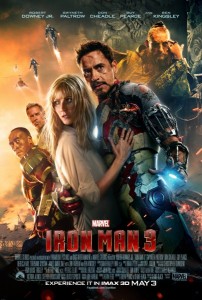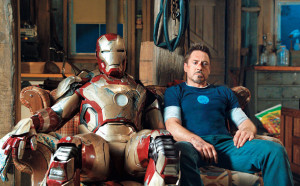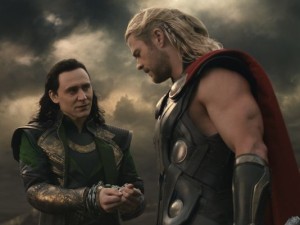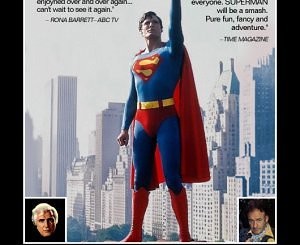In a multi-part series, Comic Book Film Editor William Gatevackes will be tracing the history of comic book movies from the earliest days of the film serials to today’s big blockbusters and beyond. Along with the history lesson, Bill will be covering some of the most prominent comic book films over the years and why they were so special. This time, as we return from another hiatus, we look at how the second chapter in the Marvel Studios’ story began.
Conventional wisdom states that when you have a monster hit such as The Avengers, it should be almost nigh impossible follow it. The odds of having another critical or financial success of that sort is astronomical, and everyone will be instead look for you to fail. The best approach to being in this situation was bring your A-game, provide your best work, and hope for the best.
The start of Marvel’s Phase II flew in the face of this conventional wisdom. The first two films of Phase II were two of the weakest Marvel put out, yet the gravy train kept rolling on.
 Phase II began the same way Phase I began, with an Iron Man film. This time, it was Iron Man 3. It would be the first film of Disney’s buy out of worldwide distribution rights from Paramount. That wasn’t the only change at play here, as Jon Favreau stepped down and handed the directorial reigns to Shane Black, who had directed Robert Downey Jr. eight years prior in Kiss Kiss Bang Bang.
Phase II began the same way Phase I began, with an Iron Man film. This time, it was Iron Man 3. It would be the first film of Disney’s buy out of worldwide distribution rights from Paramount. That wasn’t the only change at play here, as Jon Favreau stepped down and handed the directorial reigns to Shane Black, who had directed Robert Downey Jr. eight years prior in Kiss Kiss Bang Bang.
My review of the film ran here, but to sum up, it was a pretty good Shane Black film, but a fairly rotten Iron Man film. It had most of Black’s trademarks–set during Christmas, snappy dialogue, inexplicable kid characters who interact with the heroes, and a noir/detective feel. But that last trademark is where the film goes astray and ruins it for me in a big way.
Tony Stark is not a detective. There has been nothing in the past two films to show that aspect of his character. As a matter of fact, there is plenty evidence that shows otherwise. In the first film, he delegates. He sends Pepper Potts after the information he needs. In the second film, the answers to the film’s mysteries are handed to him, literally,by Nick Fury. In this film, he travels cross country, interviews suspects, hacks government files and a whole bunch of other detective-like things that he’s shown no talent or ability for in the past. All the while spending more time out of the suit than in it.
 This all seemed like a means to an end. The character was changed to allow Black to work more in his wheelhouse, with the side benefit of giving Downey Jr. more face time out from behind a computer display. But in resulted in an Iron Man film with very little Iron Man in it.
This all seemed like a means to an end. The character was changed to allow Black to work more in his wheelhouse, with the side benefit of giving Downey Jr. more face time out from behind a computer display. But in resulted in an Iron Man film with very little Iron Man in it.
It also showcased what would become a problem with the post-Avengers films. In a shared universe, when national landmarks and a large number of people die, and other heroes do not show up, it kind of defeats the purpose of a shared universe. You could make an argument about SHIELD not being there, as domestic terrorism not being their purview, but I’d like to think that Captain America would be on the scene.
Of course, the world didn’t have the same problems I had with the film. It made over a billion dollars worldwide, becoming the 6th highest grossing film of all-time in worldwide grosses. Critics viewed it favorable as well., earning it a 78% fresh.
 Five months later, in November of 2013, we got our second entry into Phase II, Thor: The Dark World. As you can see in my review here, I liked it a bit more than I did Iron Man 3 but it was still a very flawed movie that paled in comparison to any of the Phase I films.
Five months later, in November of 2013, we got our second entry into Phase II, Thor: The Dark World. As you can see in my review here, I liked it a bit more than I did Iron Man 3 but it was still a very flawed movie that paled in comparison to any of the Phase I films.
Like Iron Man 3, there was a new director for the sequel. Kenneth Branagh did return, and Marvel underwent search for a director to fill his shoes. Brian Kirk was first up, but left under contract issues. Patty Jenkins was hired but left shortly into preproduction over “creative differences.” Finally, Alan Taylor was picked to helm the film.
The main gripe I had about this one was the fact that there were too many characters for the plot, and, outside of Thor and Loki, characterization fell by the wayside. This was especially noticeable in the films villain, Malekith (Christopher Eccleston). Malekith was nothing but a cypher. We are told to hate him (in a voice over narration, no less) because he wants to destroy the universe. But the character shows no passion, no fire, no drive. He is basically a figurehead to aim Thor at. The film would be infinitely better if Malekith was developed more, and, as it stands, it was a waste of a charismatic and interesting actor such as Ecceleston.
 Of course, there was really no room for that sort of development. Malekith was put in line behind Odin, Frigga, Selvig, Jane Foster, Heimdall, Fandrall, Sif, Darcy, and others in terms of character development, and with that many characters, there was no way any one character could get anything more than a superficial development. The only characters who fare the best is Thor and Loki, if only because they are given a little more time to play off the characterization from previous films.
Of course, there was really no room for that sort of development. Malekith was put in line behind Odin, Frigga, Selvig, Jane Foster, Heimdall, Fandrall, Sif, Darcy, and others in terms of character development, and with that many characters, there was no way any one character could get anything more than a superficial development. The only characters who fare the best is Thor and Loki, if only because they are given a little more time to play off the characterization from previous films.
And the work Hemsworth and Hiddleston did is what raised this one to the level of an enjoyable film. Every time they were on screen together was electric and every time they were on screen separately was watchable.
Once again, the plot problems did not keep audiences away. The film made more than the sequel by its 19th day of release, moving toward a $644 million dollar worldwide pay day.
While the first two entries into Phase II were somewhat disappointing, Marvel more than made up for them with the next two. We’ll talk about them in our next installment.





William Gatevackes liked this on Facebook.
FilmBuffOnLine liked this on Facebook.